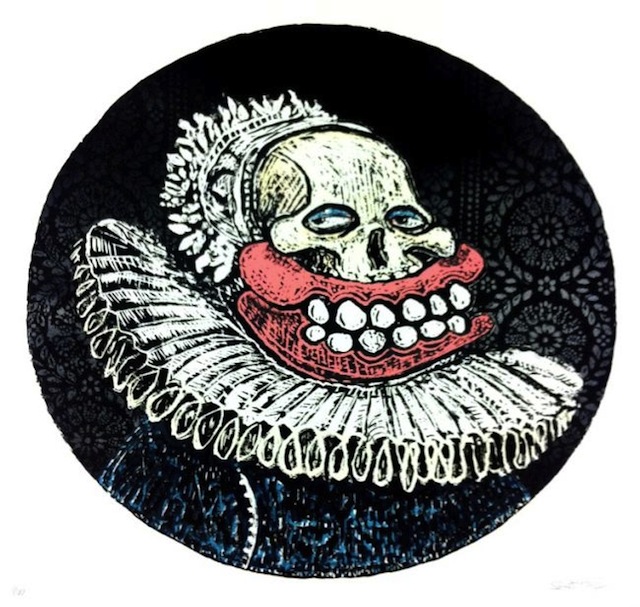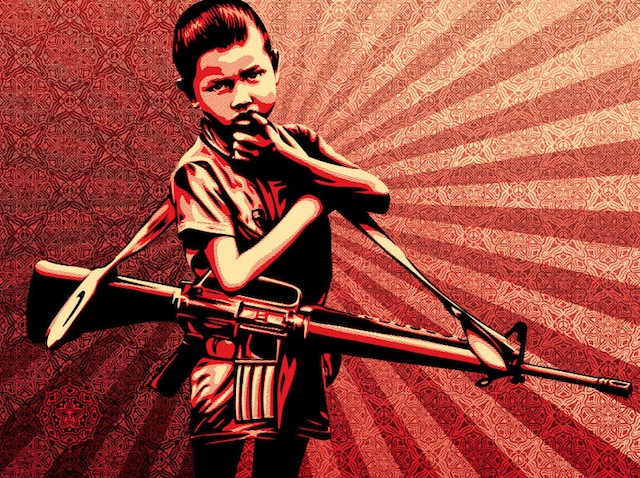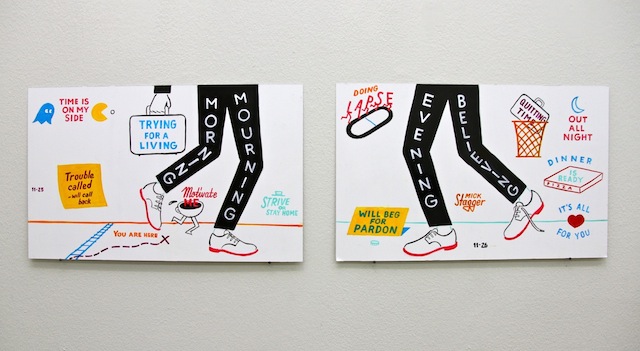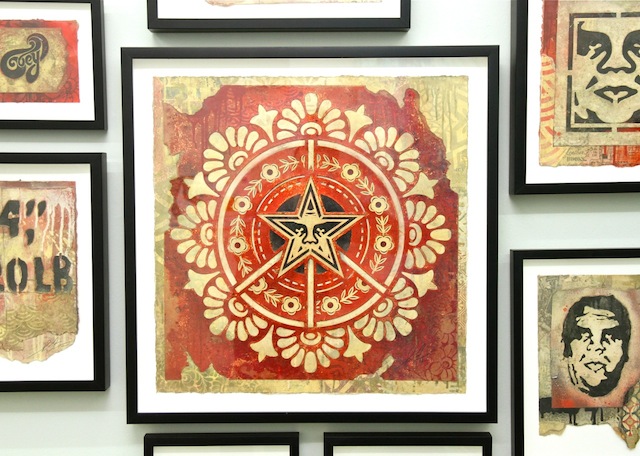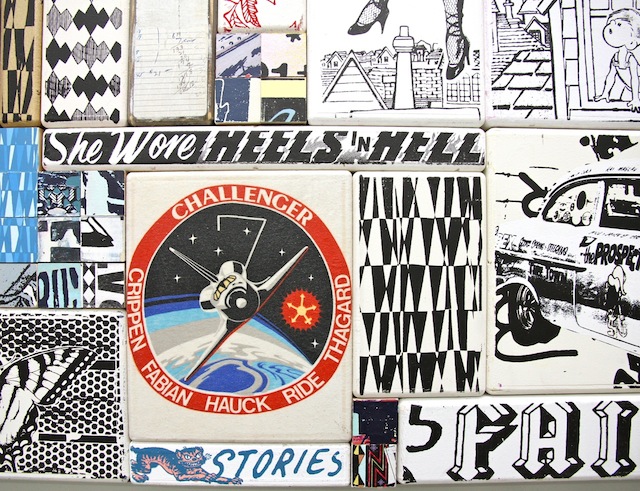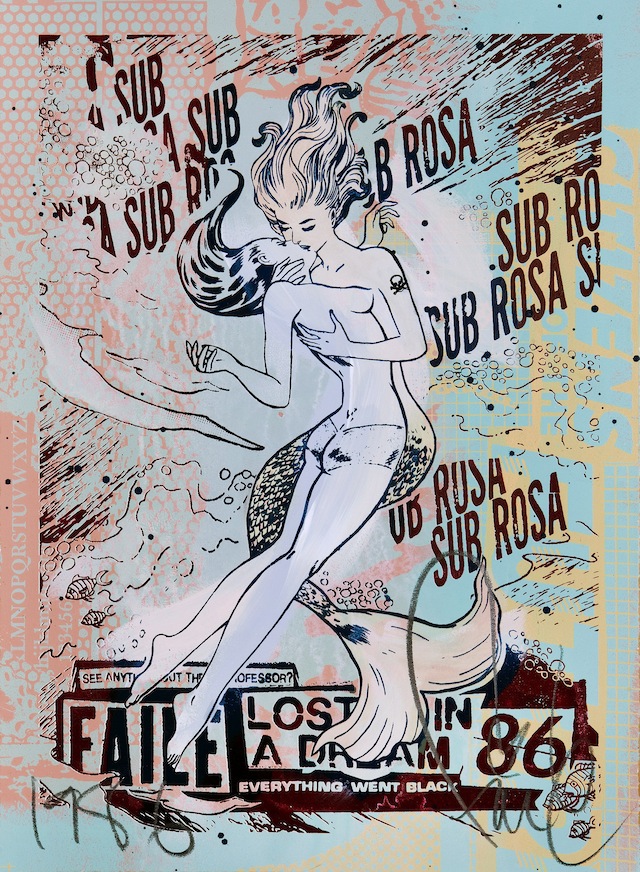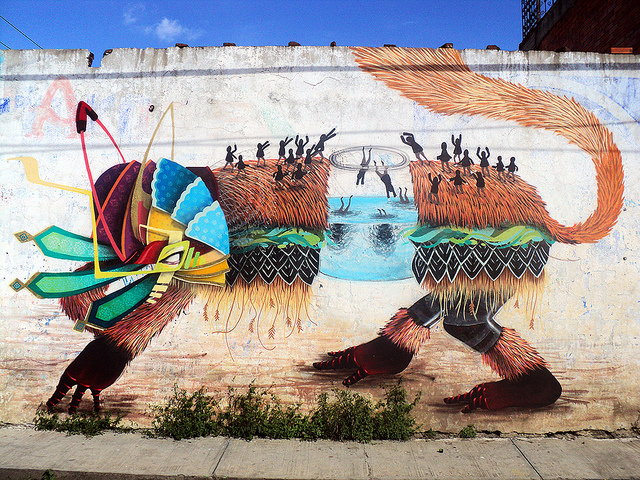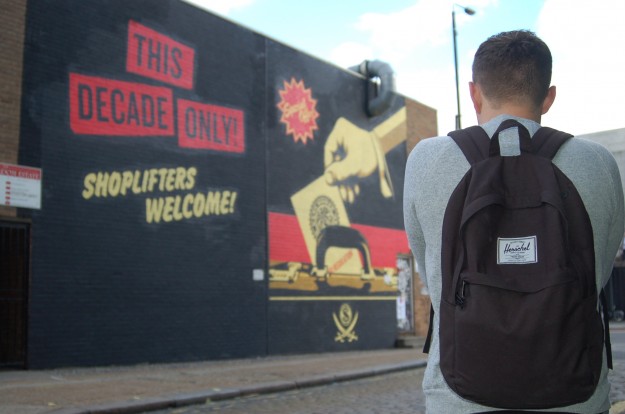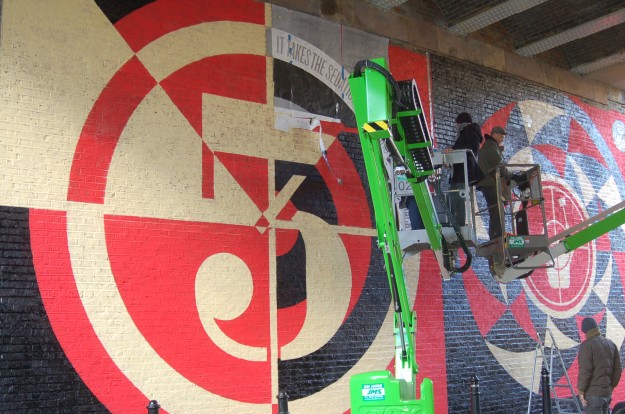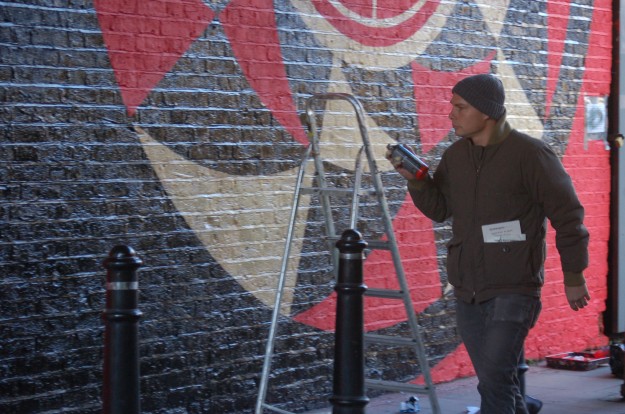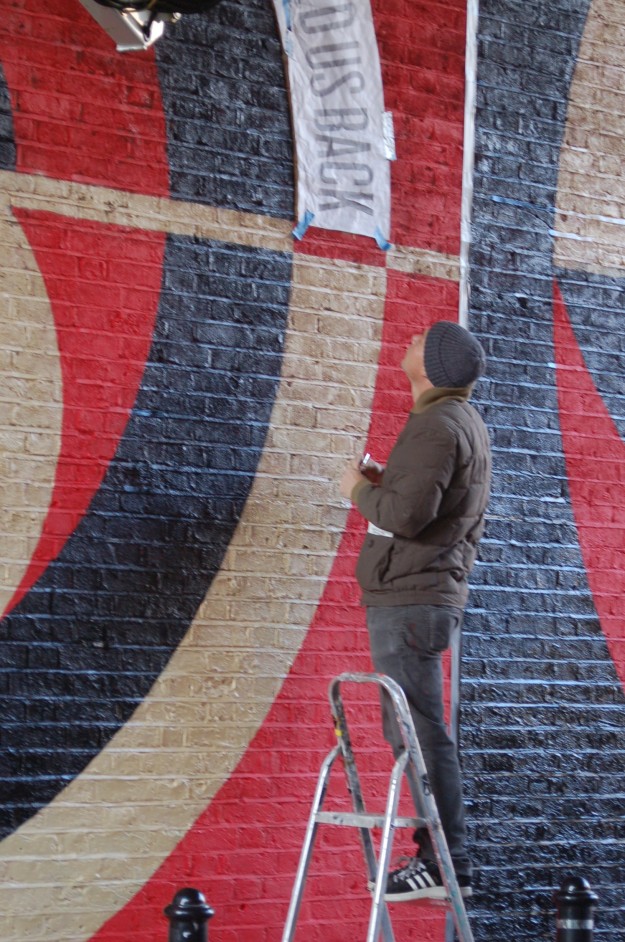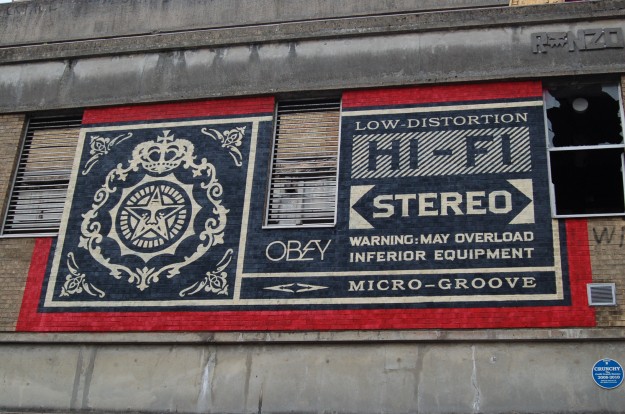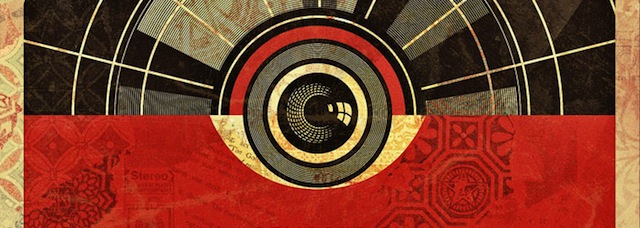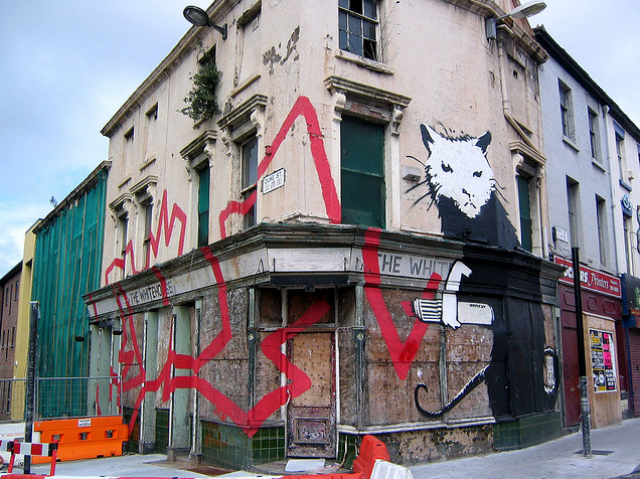
Being an elusive figure in the graffiti/street art world is slowly becoming obsolete. Artists find themselves making the transition from anonymity to the limelight, for what many think is solely for profit. The proliferation of social media has amplified the audience of street art, and led to increased exposure and opportunities for artists. But what motivates street artists to step away from their elusive lifestyles?
Recently, it seems many graffiti writers have cast away their incognito identities and made the transition towards becoming legitimate artists. What was once considered an act of vandalism is now commissioned by brands and displayed in art galleries around the world. But in order to market themselves as legitimate, recognizable artists they need to step away from their personas and present themselves not as vandals, but as artists.
At one point, street artists in question would mask their voices and hide their faces behind a blurred out lens in order to keep their identities hidden to the general public during interviews. Now, all that smoke and mirrors are gone. Personally, I used to love D*Face. He was strictly recognized by his moniker and nothing else, with his face always blurred during interviews. Then, seemingly overnight, it all changed. He began to create work and appear in interviews under his real name. Suddenly, D*Face became Dean Stockton. His work became mild and denotative. His mythical qualities as an artist were diminished. He just didn’t seem as interesting.
So why make that transition? Why not stay hidden and attempt to make a living while staying private? Artists such as Kaws and Shepard Fairey could easily have stayed elusive, but now they’re the biggest names in the street art world. When Kaws started hijacking billboards and bus shelter ads, no one knew who he was. They only knew him by his name. Now he’s making vinyl toys, taking part in the Macy’s Thanksgiving parade, and getting interviewed by Pharrell Williams. Similar tale with Fairey: he started out pasting up stickers around his local skate park, nobody knew what Obey meant, but it was everywhere, so it must have been important. Fairey stepped out of the shadows and now, a decade later has his own clothing line and his face is one of the most recognizable in the street art world. Why? Artists realize that in order to market their art, they need to market their persona first. Is this the process of selling out?
But then there are the ones that stay elusive, the purists of the street art world, artists like Dain and Bäst. Born and raised in Brooklyn, the elusive Dain creates sublime works of art the merges old Hollywood glam with new age colors in their composition. This, along with his roots in graffiti, creates a gritty yet delicate street art style that is all his own. There was a weird video that came out a while back about Dain, starring someone other than Dain portraying him. It followed around an old guy as he talked about his life and art and all of his inspirations while answering questions from the camera man. At this point, we know that Dain isn’t really the old man (notice his pasting skills), but one can only assume that the video was meant as a marketing tool, for people to get on the Dain bandwagon and spread his name out to the public without ever being seen. But apart from that video, Dain has never really been a public artist but his works will always be deemed as some of the best of our generation.
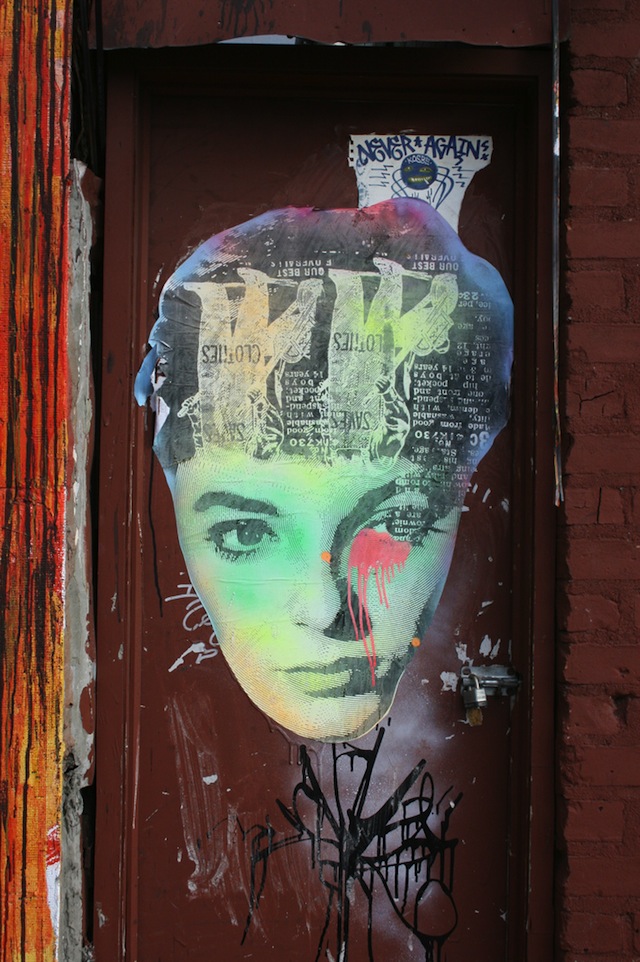
Bäst plays his part really well. Brooklyn-based artist Bäst has been wheat-pasting throughout New York’s urban landscape for over a decade now. Bäst has remained an elusive character that has rarely been seen in public and whose very existence has been debated. There are very few video interviews where you can hear Bäst talk. The only interview that comes to mind was for the Deluxx Fluxx collaboration with Faile (which is, in my opinion, one of the best street art based collaboration to have ever happened). Bäst manages to frequently collaborate with Faile, who are not anonymous artists, but apart from that, he’s a pretty elusive guy that keeps producing on a consistent basis. Sure, he had this weird, super small scale collaboration with an olive oil company, and the Marc Jacobs collaboration which confused pretty much everybody, since his art being displayed on a sweater for a highly lucrative brand could be seen as an uncharacteristic “sell out” move, but apart from that, he’s always stayed true to form and just stuck to street art.
I bring up Bäst and Dain not only because of the elusive nature, but because they are in fact brothers. One can only assume that some sort of pact was made between them to stay pretty much anonymous to most social groupings. Sure they might have ulterior motives, but as long as they stay elusive, we’ll really never know.
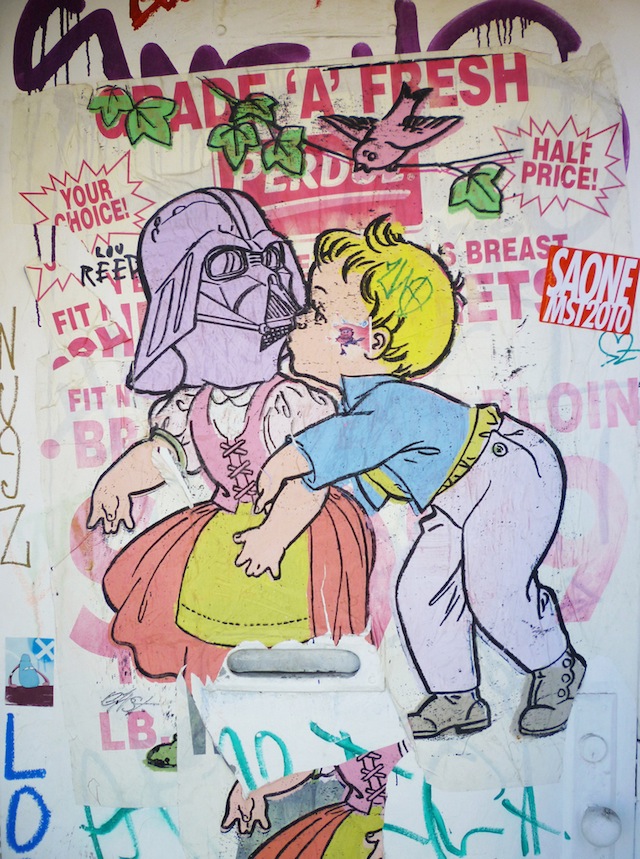
And of course, one has to mention Banksy or as we know him now, most likely Robin Gunningham. Regardless of his moniker, he helped cement street art’s place in the established art world. Street art fans will forever have a love/hate relationship with Banksy. At this point, his work can come off as banal and obvious, but the fact that his identity was questioned for so long, in our surveillance culture, is pretty significant. He got his art up in the Met, or someone posing as him did. He got in and out of Disneyland without getting caught. Banksy’s evasiveness lends him a mystique and fascination, but he still manages to profit from his art.
These are the kind of question that people ask themselves when artists stay anonymous. We question everything about them, not knowing what they’ll do next. Suspense and curiosity will always play a part in their persona. Their anonymity is what keeps us interested; it plays a part in how we perceive them. Take these qualities away, and we realize that these artists are just like the rest. Would Banksy of reached this kind of popularity if he was just Robin Gunningham all along? Of course not. But he’s also a unique case; it’s hard to imagine a street artist will ever achieve what he has in our life time. So why stay elusive? Well, I guess it’s a question at the core of street art. Artists are supposed to be a hooded, hidden characters putting art up illegally, leading people to ask questions. How did it get there? Who did it? Why did they do it? When it comes to people like Kaws and Shepard Fairey, they answer these questions in the interviews that they partake in. But for others, maybe we’ll never know.
Photos By sabeth718 and Klara Kim


